Warren Feeney – 30 July, 2013
Smart touched upon the relationship between artists and dealer galleries in his opening address, acknowledging the great pleasure that he took in working with artists; visiting studios, selecting work and presenting it in numerous solo and group shows. And if there was any thematic concern that emerged from Smart's group exhibition of senior and mid or early-career artists in 25/52, it was about this very relationship.
Christchurch
Stephen Bambury, Judy Darragh, Neil Dawson, Andrew Drummond, Robert Hood, Lonnie Hutchinson, Marie Le Lievre, Julia Morison, Anne Noble, Michael Parekowhai, Miranda Parkes, Nathan Pohio, Jude Rae, Heather Straka
25/52
19 July - 17 August 2013
There was no room to move either inside or outside 52 Buchan Street, when Jonathan Smart opened his newly relocated premises for the Jonathan Smart Gallery last Friday evening. This felt like an important milestone for the arts in Christchurch, a seriously welcome occasion, celebrating 25 years of representing the work of many leading New Zealand artists by one of Christchurch’s key dealer galleries in new premises that equally signified a statement about the recovery and rebuild of Christchurch.
Following more than two years of sharing space for exhibitions with Neil Dawson in his Linwood studio, the Jonathan Smart Gallery is now in a permanent new home, as opposed to being like another one of those ‘temporary arts projects.’ (Transitional arts projects in Christchurch, ironically seems to be permanently everywhere, with no evidence to suggest that they will soon be assigned to the city’s history).
Could there have been a better message for the arts in Christchurch right now than Smart’s announcement that he was committed to Christchurch in this new, elegantly industrial space that spoke of a renewed confidence in the arts in this city? As the entire arts community continues to wait - and wait again - for decisions from the Christchurch City Council about how the restoration of the Town Hall will impact on the arts, Smart’s opening was a virtual call to action.
Yet there was also far more to the opening of this gallery than just evidence of a developing arts infrastructure or its history and contribution to the arts in Christchurch. (Opening as the Jonathan-Jensen Gallery in 1988, the gallery then represented a shift from the school of Canterbury painters to a generation of artists who were younger and often engaged with conceptual practice and post-modernism - more likely to have come from the Universities and be versed in feminist politics and performance art - clearly unlikely to have frequented the New Albion Hotel on Columbo Street on Friday night).
The new Buchan Street gallery also offered an important and warm reminder of the critical role that dealer galleries in general have consistently played in the establishment of professional arts infrastructures over the past 35 years in New Zealand. Rarely acknowledged in the country’s art history is the reality that at the heart of the country’s art and its development has been the relationship between artists and dealer galleries ever since Peter McLeavey opened his gallery in Cuba Mall in 1968 or Barbara Brooke and Judith Gifford opened the Brooke Gifford Gallery in Manchester Street in Christchurch in 1975.
In fact Smart touched upon this relationship in his opening address, acknowledging the great pleasure that he took in working with artists; visiting studios, selecting work and presenting it in numerous solo and group shows. And if there was any thematic concern that emerged from Smart’s group exhibition of senior and mid or early-career artists in 25/52, it was about this very relationship: 14 artists represented in a show that gave careful deliberation to what might be appropriate for such an occasion with both Smart and his artists, giving due attention to this subject.
25/52 dealt to Smart’s history, encompassing the politically romantic work of Andrew Drummond, Neil Dawson’s similarly engaging, yet more overtly user-friendly take on humanity’s relationship with nature, or Jude Rae’s and Judy Darragh’s consideration of the imagery, signs and symbols of Western art and culture. For seriously good measure there was also an opening intervention in the presence of Guerrilla Girls, complemented by the work of more recent additions to Smart’s stable like Miranda Parkes and Rob Hood.
This evidence of conversations between artist and dealer was perfectly realised in Stephen Bambury’s IC 089335, a work whose gestation has taken place over the previous four years. An object of beauty that had been requested by Smart for inclusion in 25/52, Bambury’s painting revealed an undeniable authority; poised and concise with just the right visual rhythm, spirited colour and animation.
25/52 also spoke of a testing of ideas in the exchange of conversations between artist and dealer. Marie Le Lievre, Boxed Black (Bagged) was a tougher work than she has previously chosen to exhibit, and there is sense that Smart recognised this darker spirit in her painting. Certainly it was brought to the surface in Boxed Black (Bagged), highlighting a no less critical or pervasive and rewarding aspect of her practice.
In contrast to the weight and authority of Le Lievre’s imagery, Michael Parekowhai’s Happy Anniversary, also revealed a connection between the artist and gallery through a more immediately warm and intimate contribution. Diminutive and cast in silver, the modesty and scale of Happy Anniversary spoke volumes in its spirit and intentions.
In the accompanying fold-out catalogue Smart notes that his relationship with his artists had been a ‘journey of the imagination’ one that has been and will be cherished for many years to come. As a kind of description of the gallery as extended family, Smart shared a thought recently expressed by CEO of the Canterbury Employers Chamber of Commerce, Peter Townsend, who revealed his surprise and pleasure over the way in which local business operators had met the challenges of maintaining operations in Christchurch over the past 2 years. Townsend commented that for most self-employed people, the business they draw their livelihood from and supported their household with, was as important as family.
It is also worth noting that in addition to the opening of the Buchan Street gallery, the presence of Art Box on Madras Street, the National, the Physics Room and Form Gallery in Sydenham, there is ample evidence to confirm that the arts are currently taking a significant lead in the recovery of the inner city. Smart’s gallery in Buchan Street is part of a larger South-East precinct, sharing space with other galleries, operating outside the CCDU’s frame for the new inner city.
The activities of galleries in the South East city represent a significant step forward in the rebuild - providing local and central government with an example to aspire to. Implementing a similar adaptability and lightness of touch to that undertaken by the arts community and individuals such as Smart could only be of benefit to Christchurch - its well-being and spirit - and the current state of its residents.
Warren Feeney

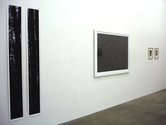
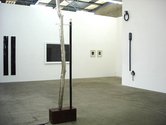
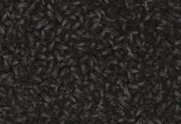

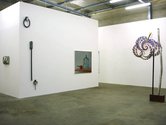

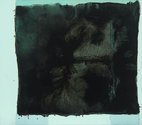

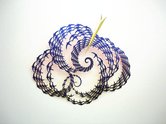

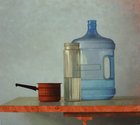

 Two Rooms presents a program of residencies and projects
Two Rooms presents a program of residencies and projects Advertising in this column
Advertising in this column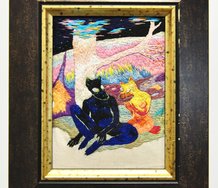
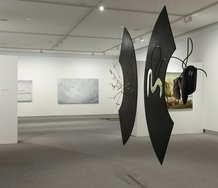
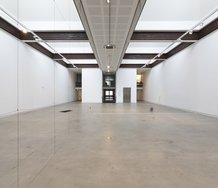

This Discussion has 0 comments.
Comment
Participate
Register to Participate.
Sign in
Sign in to an existing account.